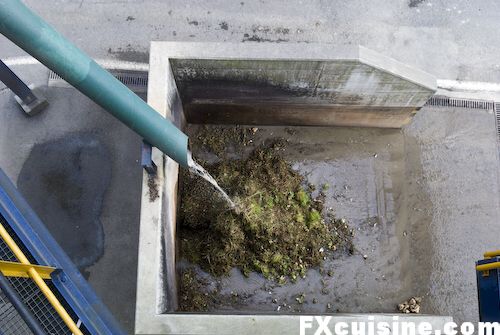

 |
 |

Swiss Sugar FactoryHome >> Experiences
Do you eat sugar? I do, and last week decided to find out where it comes from until I reached Aarberg, Switzerland's largest sugar factory. The factory operates only for 4 months a year during beetroot season. The rest of the year, the staff works on making the giant factory even more efficient. And these guys are serious - the factory is like one perfect giant Swiss clock. Follow me in. Sugar makes for big politics even outside Cuba. Originally sugar came from sugarcane and was imported in Europe as a luxury, but as our civilizations became richer, sugar became a staple on everybody's table. Who would give up sugar? Certainly not me. Christ, without sugar, I'd be half the man I am today. And so, since Napoleon, politicians have understood that providing for a steady stream of sugar into the country is key to keeping people content. In the 1800s a german chemist opened the first factory that could successfully extract sugar from sugar beets on an industrial scale, and ever since then Western European countries have always maintained a domestic production of sugar. Just in case. Sure, beetroot sugar is more expensive than getting some Cuban machete artist to harvest sugarcanes, but the Swiss want to make sure there will always be some sugar in our coffee cups, even if things go Mad Max on us. Beetroots arrive at Aarberg either on tractor convoys ... ... or in train wagons. Aarberg is a picturesque town located right on the border between French and German-speaking Switzerland, a couple minutes from Bern, our capital city. If you visit Switzerland in the fall, you will see many piles of beetroots in the fields, waiting for collection, and many open-air train wagons filled to the bazoo with those humble roots. Especially in Vaud and Solothurn, the two regions biggest on beetroots. Farmers in other areas prefer to grow banknotes. The people at the factory were very friendly and let me climb on the many ladders, exterior stairwells and footbridges to take pictures. As a local farmer rides his tractor to bring a load of beetroots to the factory ... ... a giant arm descends from the sky and grabs a sample of his beetroots while the truck is weighted. The beetroots are loaded on a conveyor belt, weighed, cleaned, and mashed to a pulp to extract a sample. Each of the funnel-and-jar units you see above match a specific truckload. A computer calculates the sugar content of the beetroots and how much earth and dirt had to be removed. Beetroots come with 5% to 10% earth and they contain between 12% and 22% of sugar. Only three people operate this unit, one to take the samples in the trucks, another to oversee the sample cleaning and pulping, and the chemist who checks that the numbers make sense. The average sugar content of the last day is written on the wall. The factory majority shareholder is a cooperative of beetroot farmers, and they have found this to be the fairest system. Instead of buying beetroots by the weight, giving lazy farmers an incentive no to wash their beetroots, this system pays the farmer by the weight of sugar contained in his beetroots. The same day each farmer can check online his day's load's sugar content and how much money he made. This is as fair as it gets.
The tractors only stop for a few seconds to have their beets sampled. The convoy drives on ... ... and enters an unloading bay where beetroots are dumped in a canal using powerful water jet that fill an underground canal with beetroots and water. Making a white edible powder calls for the extreme cleanliness. A row of secondary water jets now cleans the ground to make sure the factory is not soiled with earth, grit and dust. The truck is then weighted again to compute the total beetroot load. The beetroots flow in an underground canal and a giant elevator brings them up on the third story, where a conveyor belt removes grits and stone ...  † ... and spits them on the ground. A local company uses this earth to make bags of soil for gardeners. Water is recycled. Given the prodigal amount of water the factory uses, I was surprised to learn that once that the system is primed, the factory consumes no extra water. All of the water is recycled in a huge pond, the kind of which you'll invite your tax collector to swim in, and beetroot moisture supplies the rest. There is not much evaporation given that this happens in the fall. The foam floating on the lagoon would make excellent Óles flottantes on Hell's dessert menu. Back to the beetroots. After picking and washing, a moving conveyor belt dumps the beets in a silo. As the week advances, this giant open-air beetroot storage silo will gradually fill up with what the farmers wheel in, so that on the week-end the factory can continue to operate even when deliveries are stopped. A beet buffer, if you will. The beets are so small and the factory so large that you lose the sense of scale in this place. ... Article continues NEXT PAGE... |
|
Bookmark with: